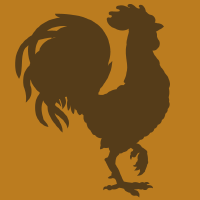Topic Menu
► Topic MenuTopic Editors



Sustainable Development of Natural bioactive compounds/Products in Animal Resource and Agriculture Science
Topic Information
Dear Colleagues,
Bioactive compounds derived from natural resources will be an excellent source of therapeutics and industrial in animal-agricultural production systems. For centuries, wild plants, animals and microorganisms have been considered natural factories for the biosynthesis of thousands of bioactive compounds with diverse biological activities to treat various diseases and maintain good health. For this reason, it receives special attention in agricultural, commercial industries, and pharmaceutical applications. These Bioactive compounds are additional nutritional constituent found small quantities in foods and provide health benefits beyond the basic nutritional value of the product. The use of natural bioactive compounds instead of synthetic chemicals attracts scientists, researchers, and commercial industries as they are renewable, degradable, safe, and low toxic. Plant bioactive compounds are widespread in the plant kingdom, including forage species. Besides, the extractions of bioactive compounds from plants has been viewed as treasured substances since ancient times, even by sovereigns. In most facilities, the animals are kept at relatively high densities, causing stress and disease problems that are well known. It is clear from most studies that farm problems can be encountered through measures to prevent an outbreak of disease or through the treatment of the actual disease by drugs or chemicals. As long as effective prevention of all diseases cannot be achieved, the animal farmer has no choice. It is important, in the short term, to choose drugs which are not immunosuppressive/feed additives.
This topic welcomes publications which focus on any aspect of animals (pigs, cattle, aquatic animal, poultry, rabbits, rats, etc.) in agricultural production systems, including immunology or nutrition, which increases animals’ resistance to infection and enhances their growth and production performances. In this Topic, we invite researchers to contribute their original or review articles on sustainable development of natural bioactive compounds/products in animals, agriculture, poultry, agronomy and fishery. Additionally, papers are welcome that focus on the potential bioactivities of extracted natural compounds and their potential biological applications in human welfare.
Prof. Dr. In Ho Kim
Dr. Shanmugam Sureshkumar
Dr. Balamuralikrishnan Balasubramanian
Topic Editors
Keywords
- phytochemicals
- feed additives
- plan based feed
- antioxidants, anti-inflammatory
- bioactive compounds from various natural resources
- biological activities of bioactive compounds
- mycotoxin
- microorganism
Participating Journals
| Journal Name | Impact Factor | CiteScore | Launched Year | First Decision (median) | APC |
|---|---|---|---|---|---|

Agriculture
|
3.6 | 3.6 | 2011 | 17.7 Days | CHF 2600 |

Agronomy
|
3.7 | 5.2 | 2011 | 15.8 Days | CHF 2600 |

Animals
|
3.0 | 4.2 | 2011 | 18.1 Days | CHF 2400 |

Fishes
|
2.3 | 1.9 | 2016 | 15.7 Days | CHF 2600 |

Poultry
|
- | - | 2022 | 25.1 Days | CHF 1000 |

MDPI Topics is cooperating with Preprints.org and has built a direct connection between MDPI journals and Preprints.org. Authors are encouraged to enjoy the benefits by posting a preprint at Preprints.org prior to publication:
- Immediately share your ideas ahead of publication and establish your research priority;
- Protect your idea from being stolen with this time-stamped preprint article;
- Enhance the exposure and impact of your research;
- Receive feedback from your peers in advance;
- Have it indexed in Web of Science (Preprint Citation Index), Google Scholar, Crossref, SHARE, PrePubMed, Scilit and Europe PMC.

